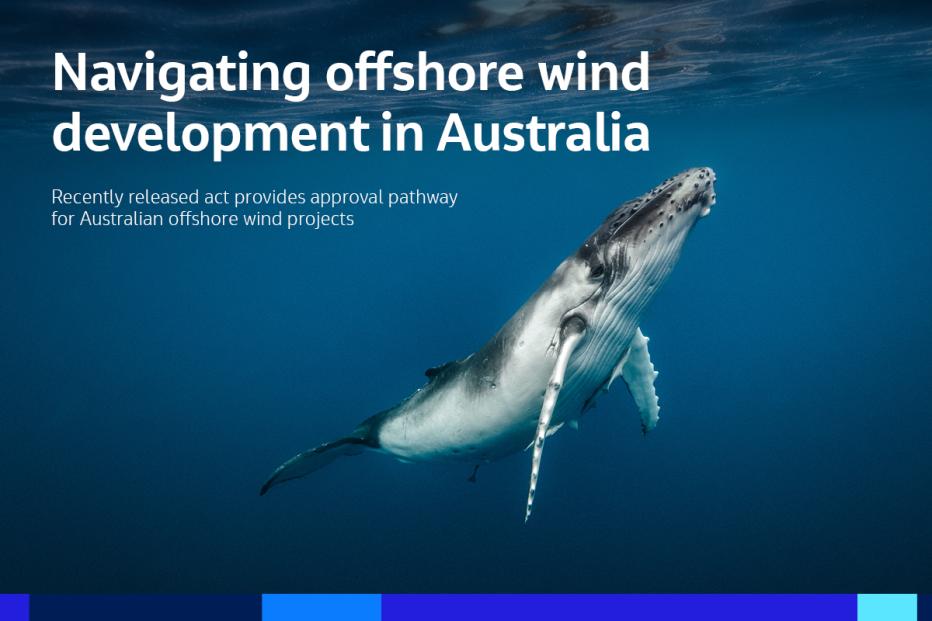
An Australian Financial Review article published earlier this year quoted the country’s offshore wind potential at 2000 gigawatts, far more than Australia’s entire electricity needs.
Offshore wind developments, while presenting a range of physical and technical challenges, present some significant benefits compared to onshore alternatives, including stronger and more consistent winds, less wind turbine generator (WTG) component size transport and logistic constraints, plus potentially fewer development constraints and social and amenity impacts.
The Offshore Electricity Infrastructure Act 2021 (OEI Act) and regulations, commenced on June 2, 2022, lays out the process for obtaining leases. Further draft legislation is expected later this year and will provide guidance on how to develop a management plan to obtain a license.
Management plans will encompass all key technical, safety, environmental and maintenance aspects of the proposed development and form the basis of post-approval compliance and enforcement by the regulator, the National Offshore Petroleum Safety and Environmental Management Authority (NOPSEMA). Only once NOPSEMA approves the management plan will an operating license be granted. Additionally, management plans will require revision and resubmission to NOPSEMA every five years.
The guidance released in June describes the interaction between the OEI legislation and any primary environmental approval required, which would be under the Environment Protection and Biodiversity Conservation Act 1999 (EPBC Act). NOPSEMA will require any EPBC approval to be obtained prior to submission of a management plan. The assessment of EPBC referrals can take one of several pathways, each with different levels of detail, public comment and duration, ranging from a few weeks to a year or more.
The level of EPBC assessment applied is dependent on several factors including scale, complexity, public interest, and the nature and extent of potential impacts on matters of national environmental significance, such as protected areas or species.
It is also possible for proposed developments to be rejected by the Australian Minister for the Environment and Water if they appear to be “clearly unacceptable.” Although a rare outcome, the potential for such rejection must be carefully weighed when selecting locations, timing and other potentially restricting factors.
Effective baseline studies and stakeholder consultation is key here. By avoiding sensitive receptors, both temporally and spatially – including migratory species such as whales which may only be present some of the time – proponents can provide the regulator and interested stakeholders with assurance that impacts will be avoided or mitigated to acceptable levels.
Jacobs has worked closely with NOPSEMA since its inception in 2012. During that time our team has partnered with clients to deliver more than 100 offshore proposals. We also possess extensive experience preparing EPBC and other environmental studies, impact assessments and approvals in the Australian Commonwealth marine environment. Our environmental and wind power professionals work routinely with state and territory regulators on approvals extending into coastal and onshore areas. With an Australia-wide team represented in every state and territory, along with our experienced global network, we are well placed to partner with clients at every step of their offshore wind development projects, from conception through to delivery and implementation.
If you’d like to know more about the Australian regulatory environment, please contact Project Director – Wind Power APAC Paul McFarlane.













































